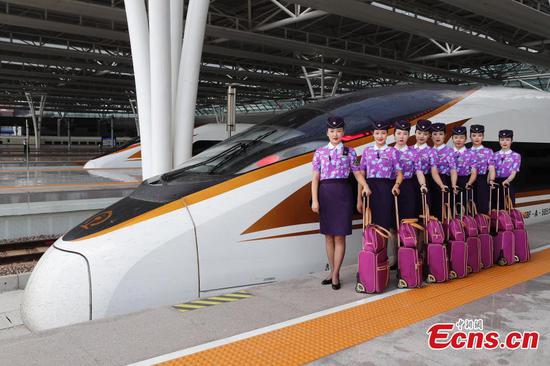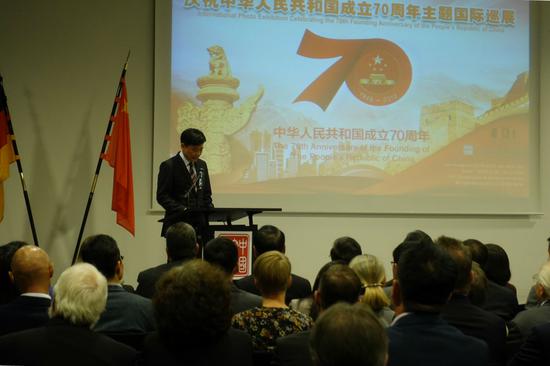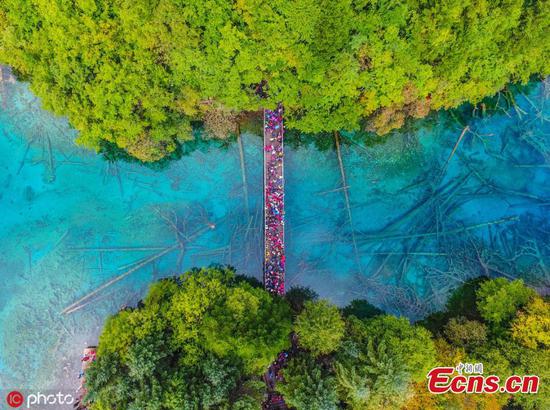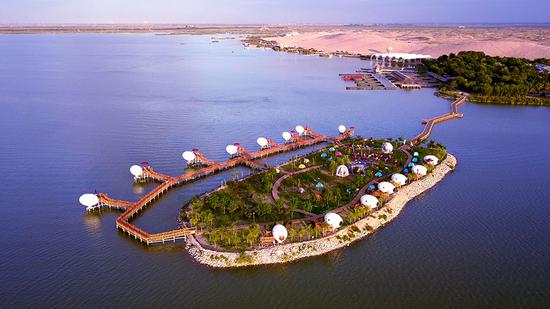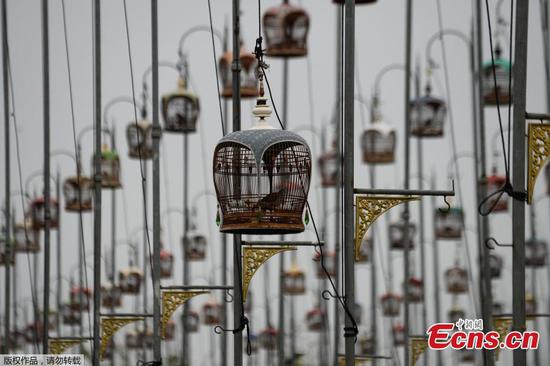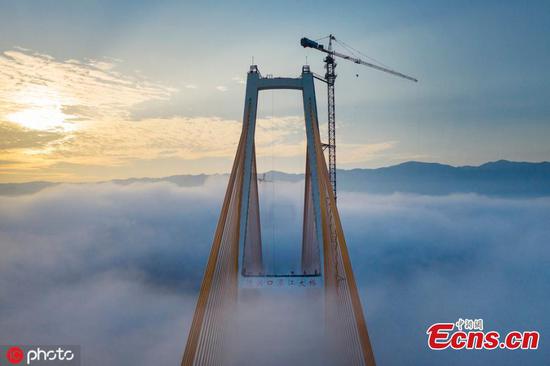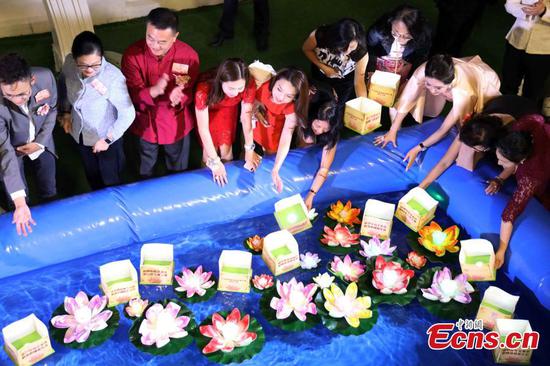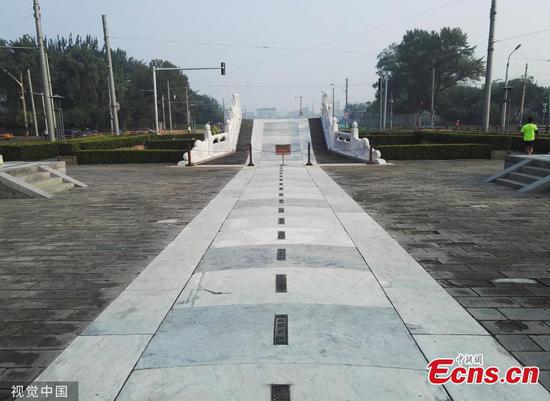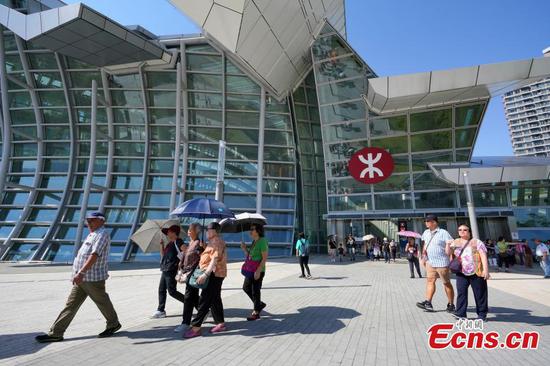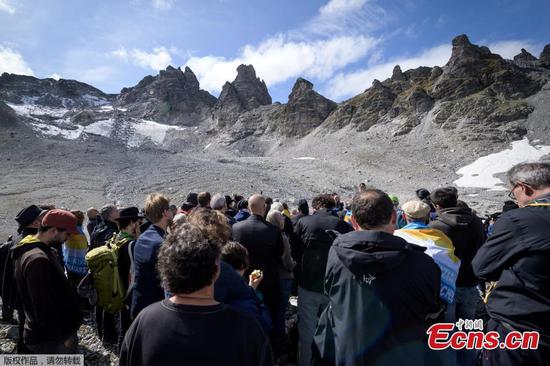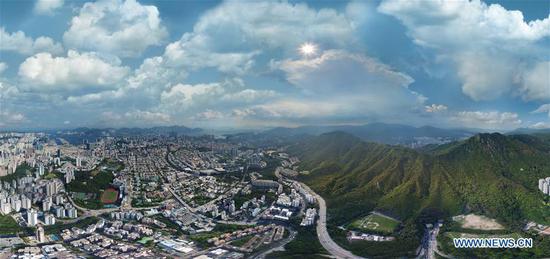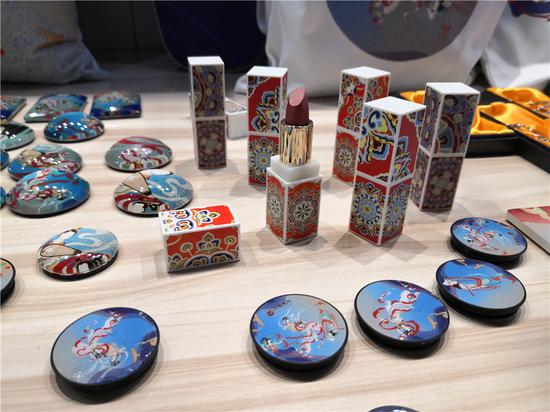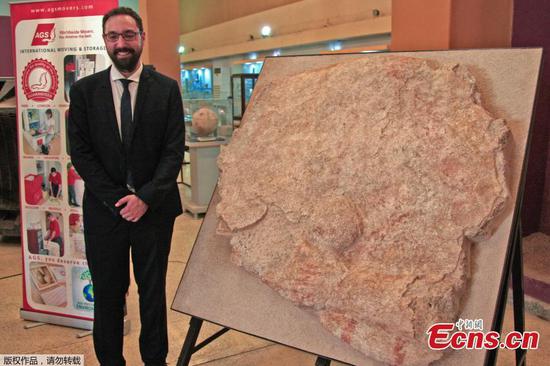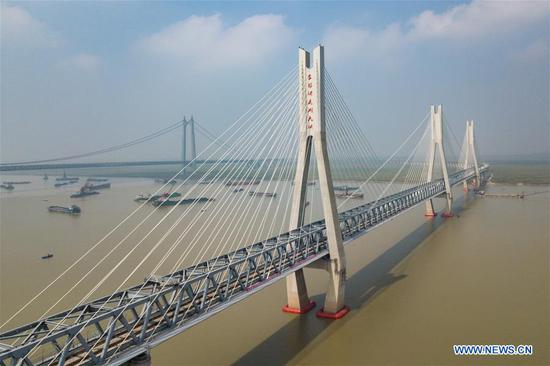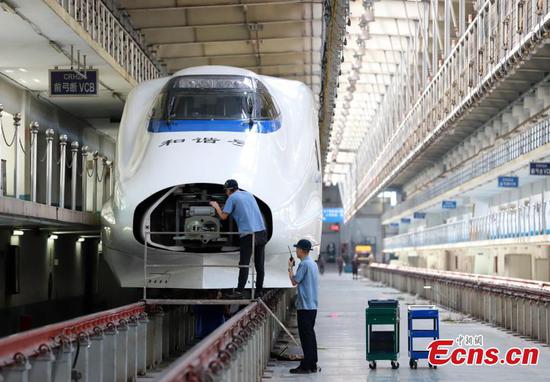
An expedition team hauls up the second-generation submersible Rainbow Fish during a test in the Pacific Ocean's Marianas Trench. [Photo/Xinhua]
Shanghai shifts focus to ocean related resources as city taps new seams to maintain high-quality edge in region
The blue economy has become a major growth driver of Shanghai's economy, by accounting for 28.1 percent of the city's GDP last year, and is fast approaching the trillion yuan level with strong growth momentum, according to the local Oceanic Bureau.
The blue economy comprises economic activities that create sustainable wealth from the world's oceans and coasts. In the past five years, the marine economy of Shanghai increased from 621.7 billion yuan ($87.6 billion) in 2014 to 918.3 billion yuan in 2018, accounting for 11 percent of the nation's total, said Yu Weidong, a deputy director from the Shanghai Oceanic Bureau.
After years of stoppages in construction, the first pile for the Peljesac Bridge in Croatia was laid earlier this year by Chinese company Shanghai Shocktorm Ocean Engineering Co Ltd. The bridge connects Komarna on the Croatian mainland and the peninsula of Peljesac, said Zhang Tie, president and general manager of Shanghai Shocktorm Ocean Engineering.
With the completion of the bridge, the current three-hour route would be shortened to three minutes on foot.
Shocktorm is a company focusing on marine engineering equipment research and development, and its various services like ocean piling, and marine and maintenance operations have created dozens of projects like cross-ocean bridges, offshore wind power and offshore oilfield installations.
"The technology expertise has guaranteed our strength, which allows us to carry out projects at home and abroad," said Zhang.
According to him, the company spends about 5 percent of its revenue on research and development.
While maintaining its leading technology position in piling, Shocktorm is looking to further strengthen its competitiveness in operation and maintenance by launching a vessel for operation and maintenance of offshore windmills in November.
Zhang said with the expansion of offshore windmills, the demand for operation and maintenance services will increase.
The total capacity of Chinese installed offshore windmills soared from 450,000 kilowatts in 2013 to 4.04 million kWh as of 2018, among which 1.25 million kWh were newly installed last year, a great leap from 60,000 in 2013, according to a research report by Shenzhen-based Qianzhan Industry Research Institute.
As the construction of offshore windmills enters a rapid growth period, it is projected that the market size of Chinese offshore windmill operation and maintenance will reach 490 million yuan this year, and snowball to about 3.7 billion yuan by 2024 with a compound annual growth rate of 50 percent, the report said.
Shocktorm is one of the more than 100 enterprises in the 140,000 square meters of gross floor area in Lingang Oceanic High-Tech Industrial Park. The companies engaged in deep sea exploration, ocean engineering equipment, marine resources development and marine medicine created a combined revenue of 3.5 billion yuan last year, up 21.6 percent year-on-year, according to Jin Miaoyu, divisional manager for the ocean industry at Shanghai Lingang Oceanic High-tech Industrial development Co Ltd.
"Many of the companies are small and micro enterprises hiring dozens of people, and it is really rewarding to see them expand and grow," said Jin.
"Rainbow Fish is one of the examples. In the past few years, we have seen it grow from merely a concept into an enterprise ready to get listed on the Nasdaq-like STAR Market, or science and technology innovation board," she added.
Rainbow Fish Ocean Technology Co is an enterprise created in 2014, capable of building manned deep sea submersibles that could dive to depths of 10,000 meters and beyond.
12Next >>|

Visitors check out a deep sea submersible developed by Shanghai-based Rainbow Fish Ocean Technology Co Ltd at its innovation center in Shanghai. [Photo/Xinhua]
"Design work on the 11 km submersible has been completed, and (we) expect to have it ready by the end of 2021, and further make it commercially operational by 2023," said Wu Xin, chairman and co-founder of Rainbow Fish.
The private enterprise is also carrying out other commercial projects to make its business sustainable. "It costs us between 250 and 300 million yuan to develop the 11 km submersible from scratch. So we are trying our best to make both ends meet, and earn enough to spend on research and development," said Wu.
Wu said the dream is to help humans visit the deep sea, like some space projects that help humans to travel far away from the earth.
Just a few blocks away, in another building in the industrial park, Xie Ning and his partners are half way from materializing their dream as their deep sea smart fish farm has completed research and development and is about to start farming Atlantic salmon in 2021.
When eight young men majoring in ship design got together to discuss their ambition after graduation in 2004, they decided to do something to combine their specialty with the daily needs of Chinese people.
"We decided to go for deep sea farming, as there is huge demand and supply gap every year from Chinese consumers," said Xie, vice-general manager of Chonghe Marine Industry Group.
According to Xie, Chinese people consumed 64 million tons of aquatic products, among which some 40 million tons are through farming, leaving the balance 14 million tons to be met by fishing.
Chonghe is going to start construction of a deep sea smart fish farm, a 253 meter long and 44 meter wide vessel (platform) that is equipped with a recyclable water tank which can recreate the exact living conditions for Atlantic salmon.
"Construction of the vessel will start this year, and we expect to duplicate the vessel, so that each can farm 8,000 tons of salmon in the future," he said.
"Our industrial park grows along with companies. In the past 12 years, our position has upgraded from being research and development focused to the whole oceanic industrial chain, and thus is on the way to building an ecosystem of the sector," said Jin. She said that the industrial park will expand to 2 million sq m with more than 2,000 enterprises and have a combined revenue of more than 150 billion yuan by 2035.
Together with the developments in Lingang and the strength in high-end equipment manufacturing, technological innovation, research and development, Shanghai will also have a maritime equipment manufacturing and economic demonstration zone in Changxing Island that will have a batch of world class maritime engineering facilities like manufacturers of offshore drilling platforms, ultra large container ships, liquefied natural gas vessels and heavy duty crane barges, said Yu with Shanghai Oceanic Bureau.
He said the oceanic industry also includes resort and coastal recreation, ecotourism, cruises, shipping and marine bioscience.
"The integration of the Yangtze River Delta region will enable cross-region collaboration in ocean related resources of talent, technology, finance, projects and market sharing, so as to make the blue economy an engine of high-quality growth in the region," said Yu.
|<










